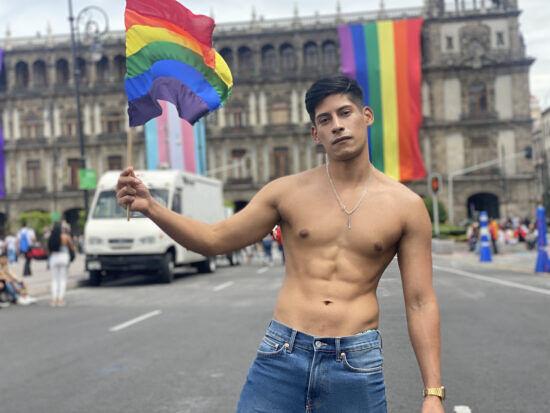Mexico City is one of the lushest cities in the world. The altitude mixed with the ever-present moisture in the air gives it the feel of an urban greenhouse. This makes the city a prime walking and people-watching destination. Despite the steady flow of traffic, it feels like ambling through a beautiful park but where you can look upon some of the most stunning architecture in the world.

Finding conveniently located accommodation is key to enjoying the city on foot.
GayCities recently checked into the St. Regis Mexico City, a sprawling and beautiful property in a prime location along Paseo de la Reforma, just blocks from the Zona Rosa, a charming gaybourhood home to bars, shops, and restaurants.
We checked out some of the most welcoming places to explore near St. Regis.
1. Calle Florencia (Florencia Street)

While nearby Amberes Street may have a bit more nightlife, Florencia Street is even closer to the St. Regis Mexico City and is home to three noteworthy venues, including Vaqueros, a cowboy-themed bar where western-style gear is always in style. Next door, El Almacen, one of the city’s oldest gay bars, attracts a lively crowd with its weekly drag shows and a fun mix of music that blends current and classic pop tunes in both English and Spanish. Below that is El Taller, a dance club that belongs to Cabaré-Tito, an LGBTQ club operator running multiple venues around the city. El Taller attracts a mostly male crowd with its mix of pumping dance music and male strippers who aren’t afraid to show it all.
2. Blow Bar

One of the newest dance clubs in Mexico City, Blow is a multilevel nightclub with an expansive rooftop that attracts lots of night owls with live DJs and performances by drag queens and enthusiastic male strippers who sometimes perform mildly erotic shows for crowds that include all ages and genders. Be sure to arrive early (before 11 pm) if you want to get a table. Once the club gets back to normal operations, it will surely be even more popular.
3. Somos Voces
This lovely LGBTQ bookshop stocks an impressive array of fiction and nonfiction works, as well as great gift ideas like Frida Kahlo wallets and mugs. Somos Voces sometimes hosts pop-up shops featuring local vendors and artisans. You can also support their community by having a bite or a drink at the café, which offers a large menu of light snacks, meals, and drinks ranging from coffee and frappes to pasta and salads, as well as an array of desserts. The venue’s event space, meanwhile, also hosts roundtable discussions, book readings, and performing arts presentations.
4. Rainbowland
If you find yourself in need of festive pride decorations and rainbow gear during the June festivities, Rainbowland is ready to help. This cute little store, located in the heart of the Zona Rosa, is jam-packed with colorful clothing, accessories, and décor. It’s the perfect place to pick up a gay Mexico T-shirt, refrigerator magnet, or some sexy men’s swimwear for your next trip to the beach.
5. Migrante
While not specifically LGBTQ, this stylish restaurant is located in the heart of artsy Roma Norte, one of the coolest neighborhoods for queer people to dine and socialize. Headed by Chef Fernando Martinez Zavala, Mexico’s chef of the year in 2014, Migrante offers a sophisticated menu that blends flavors and traditions from multiple cultures, with delicious results. It’s a rewarding place to begin your culinary journey around Roma Norte, perhaps followed by craft cocktails at Supra Roma, a rooftop restaurant and bar with some of the neighborhood’s best views.
6. The Zócalo
Mexico City’s historic downtown is like an open-air museum of historic architecture. The centerpiece of it all, the Zócalo, at more than 620,000 square feet, is one of the largest public squares in the world. Before the arrival of Spanish colonizers, this area was the ceremonial center of the Aztec city called Tenochtitlán, and it’s still an ideal place to learn about the region’s modern and pre-Hispanic history. Top attractions bordering the Zócalo include the governmental palace, the cathedral, and the ruins of the Templo Mayor, an important Aztec temple. The Zócalo also serves as the endpoint for Mexico City’s annual pride march, where rainbow flags, live music, and thousands of revelers fill the square.
7. La Casa Azul
Also known as the Frida Kahlo Museum, La Casa Azul (the Blue House) was the birthplace of Mexico‘s most famous female artist, and it offers a fascinating peek into her personal life as well as her creative process, with original furnishings, artwork, and even her studio setup. It’s located in Coyoacán, a tranquil neighborhood that’s easy to reach by Uber or taxi and is graced with a beautiful square, small shops, and restaurants, as well as the Museo Casa León Trotsky, the former home of the Marxist revolutionary, who was assassinated inside the house in 1940.



